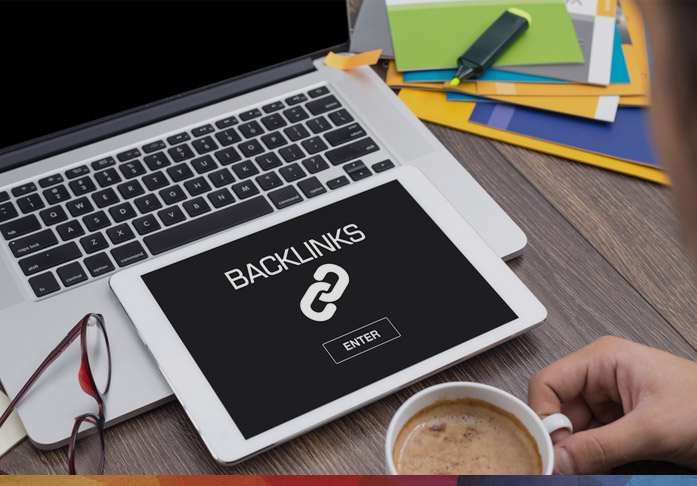The backlink audit is the task that most SEO least like. Most of the time, it is avoided by the SEO team. Some people think that backlink auditing is not necessary. There are numbers of client’s who are not aware of the structured strategy they follow. It simply implies that they have little knowledge about it due to lack of research. If you are not aware of it, consult the Top SEO Agency in India.
It is surprising that many of the clients do not have any idea about the link penalty. It is very new for many of them and it is very difficult for them to believe over it. Conversely, we come across almost every day a condition. Bad and risky links are somewhat we do handle frequently.
It is impossible to lead your business, if no one can find you, But there are 33% chances that top results getting clicked. It is also true that more than 75% of people, don’t click on second-page search. Therefore, your website should be displayed on page one only. There are few things which should be kept in mind to enhance your search engine ranking.
Therefore, the penalty is the only reason you need to do backlink auditing from time to time. First, let’s discuss the importance of backlink auditing.
Importance of Backlinks: Backlinks play indispensable for Search Engine Optimization’s point of view. They act as a fuel for good SEO.
Backlinks are the links that directed towards your website. It is considered that the more the backlinks, more popular your website is. It is believed that backlinks are important for the SEO, because various search engines such as Google, give more credit to those websites who have a quality and good amounts of backlinks. Moreover, they considered these websites more appropriate during a search query as compared to other websites. When search engines compute the significance of a site to a keyword, they deliberate the amount of QUALITY inbound links to that particular website. So we should not be gratified with just only getting inbound links, it is the quality of the inbound link that matters a lot. An SEO link audit will reveal which of the site’s links pose some form of risk. It will also expose low-quality links and identify which links probably deliver the greatest value.
After getting knowledge about the backlinks, let’s discuss some steps to conduct backlink auditing.
If your website has numbers of unhealthy and unnatural links, then you might get a penalty from Google. Harmful backlinks lower down the ranking of your SEO’s ranking. It simply means you need hard work to recover from penalties and get your SEO back to track. Thus, Audit is the only solution to avoid these pitfalls. Do not wait for the warning, just start to do it now.
Furthermore, backlink audit also opens up many new paths for your websites. Once you learn how to do a backlink audit, you can see how you can get high-quality links to your site.
Steps to conduct backlink auditing:
- Understand the link audit: Many people are unaware of the power of the backlinks and its purpose. Only a few have an idea of how backlink audit works. The first step is to understand it. A link audit will estimate how perfectly your current backlinks are performing for your site. All the unwanted or bad links to your site, they will be exposed by the audit. You must know about the link building strategy as well.
- Identify your Current Backlinks: It is important that you should know which links bring traffic to your website during your auditing. Google search console makes it easy. Sign into Google, go to your Dashboard, and click on “Search Traffic” in the left-hand sidebar. Then, click on “Links to Your Site” under “Search Traffic”. This will give you total numbers of backlinks and other valuable information.
- Performance Analysis: You can do this step manually if you have time for it. For this, you have to evaluate each link by clicking on it. It is easy to do if you have few links to do so. Otherwise, instead of it, use a link analysis tool. There are a number of free online link analysis sites are available, choose anyone that works better for your task.
- Look for the penalties: It is necessary to confirm that none of your links have received a penalty during backlink auditing. Link penalties are of two types one is an algorithm and another one is manual. An algorithm penalty happens, when Google’s algorithm penguin catches something inappropriate in your link profile and that should not be there. On the other hand, manually penalty happens when a team member of Google, review your profile manually and found an issue there. Google webmasters can be used to altered manual penalties. Either one of these penalties will cause a loss of Google ranking on your site. An algorithm penalty will cause a sudden drop in your organic traffic.
- Fix issues: If your backlink audit showed that you have difficult backlinks, then it’s time to make a plan for their fixing. It is possible that either some of the backlinks were bad or maybe all of them are bad. The main point is to do something to remove these links and replace them with some quality links. First of all, discover how to remove these bad links you have found. Links that don’t work anymore, links to spam’s sites should be removed. If a link is to spam a site, you can discuss with the website owner friendly and professional to remove those bad links. If the link is dead, you can deny that link too.
- Replacement: If you have removed all the bad links, now it’s time to add some good links. Quality links are relevant to your site and should come from another relevant site. Also, add valuable links to your site. If someones are reading about the cooking on your site, then it is appropriate to add the backlink for music classes. The more backlinks aren’t good if they go bad or irrelevant sites.
Tools for Checking Backlinks
Google Websmaster Tools can be used to get the excellent results related to the SEO links audits. Many SEO experts use it to analyze a site’s incoming links.
The Webmaster Tools “unnatural links” warnings help when you’re trying to avoid search engine penalties for inappropriate links. And if a site has already been penalized, use Webmaster Tools to examine the incoming links the site acquired shortly before the penalty hit. Similarly, Webmaster Tools can be used to try to identify the cause of a sudden drop-off in your website’s traffic.
That’s especially helpful right after a major algorithm update. Other well-regarded options available for checking a site’s incoming links include Link Research Tools, Open Site Explorer, Moz, Majestic SEO, and Ahrefs. Each of these tools including Webmaster Tools will create a list of backlinks and provide some helpful metrics. At the bare minimum, the information I look for includes the following:
- The specific URLs that link to your site
- The page(s) on your site that each of these URLs links to
- The anchor text used by each incoming link
- Whether each incoming link is followed or no-follow
Danger Signs
Relevant incoming links from other sites in your industry can improve your website’s search engine rankings and create more traffic. However, other types of incoming links can do exactly the opposite. These inbound links can negatively affect your SEO and Internet marketing campaigns, not to mention your site’s overall status with the search engines. There are several danger signs to watch for while you’re examining the backlink list created by one of the tools I mentioned above. Four of the most dangerous ones, according to me are:
- Links from websites plastered with unrelated links referred as spam sites.
- Some Links from websites that trigger a malware or virus warning when you enter their URLs into your browser
- Search engines frown on links from sites with topics like pornography, terrorism tactics, online gambling is considered as a questionable link.
- Very few links from websites that haven’t been indexed by the search engines
- Backlinks from any of these sites can be toxic. A thorough SEO link audit can find them and allow you to pursue their removal
Conclusion
This is necessary that you should do backlink auditing regularly to get the most use of this information. More oftenly you will do backlink auditing, lesser time it will take for auditing. Do it every six months is a good plan for websites. If there is any issue in the link profile, simply remove that link and add another good link in place of it. There are various good ways to get those good links. Try to use social media sites to get more links. If you have no idea about the SEO and services related to it, you can consult TopXlisting, which provides 10 top digital marketing companies in India.



